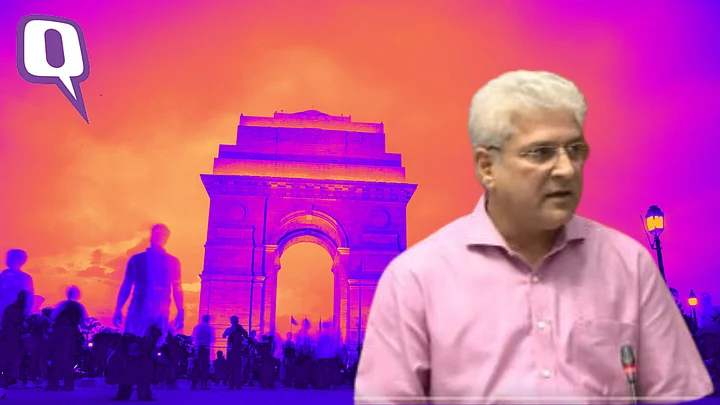Delhi’s economy recovered faster than the national economy post-COVID-19, Delhi Economic Survey 2022-23 has stated. It also added that the Gross State Domestic Product (GSDP) registered a growth of 9.14 percent in FY22 and 9.18 percent in FY23 on a low-base effect and inherent strengths of the economy.
The Economic Survey of Delhi was presented by Delhi’s Finance Minister Kailash Gehlot in the national capital’s Assembly on 20 March. The Economic Survey, by definition, is an assessment of the fiscal year that was and therefore does not give any forward-looking numbers.
According to the survey, the per capita income in Delhi for the financial year 2021-22 was Rs 3.89 lakh, or Rs 32,000 per month, up from Rs 3.31 lakh in 2020-21. Per capita income is the average income earned by a person in a given area during a specific time period. It is calculated by dividing the city’s income by its population.
The economic survey has projected the Advance Estimate of Per Capita Income to grow at 14.18 percent over the previous year to Rs 4.44 lakh, or Rs 37,000 per month. Delhi’s per capital income has been 2.6 times higher than the national average at both current and constant prices, the report noted.
The Quint analysed the Delhi’s Economic Survey for 2022-23 to see how Delhi has fared on key economic and social indicators till 31 December 2022. Here are some of the takeaways:
Tax Collection Rises By A Whopping 36 Percent
Delhi’s revenue surplus increased to Rs 3,270 crore in FY 2021-22, after plummeting to Rs 1,450 crore in FY 2022-21. Delhi has maintained revenue surplus, i.e. when the actual net income exceeds the projected expenditure, since 2015, as pointed out by the audit report of the Comptroller and Auditor General (CAG) in July last year.
Besides, Delhi government’s tax collection rose by a whopping 36 percent during FY 2021-22 as compared to the negative growth of 19.53 percent in the pandemic year 2020-21. Among these, tax revenues from stamp and registration grew by over 46 percent, while GST and VAT saw a robust growth at 36.2 percent. State excise duty collection also grew by 33.6 percent.
35 Percent Decline In Vehicles on Delhi’s Roads
Every road in Delhi that saw 100 vehicles ply on it in 2020-21 saw 65 vehicles ply on it in 2021-22, the Economic Survey stated. The total number of motor vehicles on Delhi roads in 2021-22 was 79.18 lakh, registering a 35.38 percent decrease over the previous year, when the Arvind Kejriwal-led Aam Aadmi Party (AAP) banned diesel vehicles aged over 10 years and petrol vehicles older than 15 years to ply on the city’s roads.
The number of vehicles per thousand population also decreased from 655 in 2020-21 to 471 in 2022-23. The Economic Survey report also said there is a contradiction regarding the actual number of vehicles plying on Delhi's roads as a large number of vehicles registered in the NCR region ply in the national capital and vice versa.
Less Children Enrolling In Private Schools Now
The percentage of children enrolling in private schools has fallen from around 43 percent in 2019-20 to around 33 percent in 2021-22, Delhi Economic Survey pointed out, attributing it to fall in incomes post-pandemic leading to parents switching from private to government schools for their children.
Of the total 5,619 recognised schools in Delhi, 22 percent or 1,250 are government and government- aided. The share of enrolment in these schools is 42 percent of the total of all schools. Data showed that overall enrollments in government schools has also increased to 17.62 lakh students in 2021 (record high) from 14.81 lakh students in 2017.
It is also important to note that Delhi government has earmarked 20.5 percent of the budget estimates for the education sector, making it the highest budgetary allocation for the education among all states.
Migration Added More To Delhi's Population Than Birth
At least 2.83 lakh migrants came to Delhi in 2021, contributing twice to the population of the national capital as the 1.01 lakh births adjusted for deaths, the economic survey has pointed out. 2021 is the second year in a row when migration has become a bigger factor in Delhi’s population growth than natural births and deaths.
This might also be an indication that the reverse migration, which occurred at the onset of the Covid-19 pandemic, was a momentary phenomenon and migrants were quick to come back and join the labour force as the pandemic began to recede.
As per the survey, the total population is estimated to have reached 20.7 million in 2021.
(At The Quint, we question everything. Play an active role in shaping our journalism by becoming a member today.)
